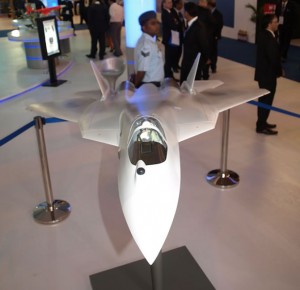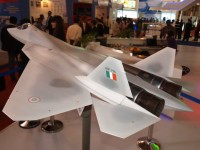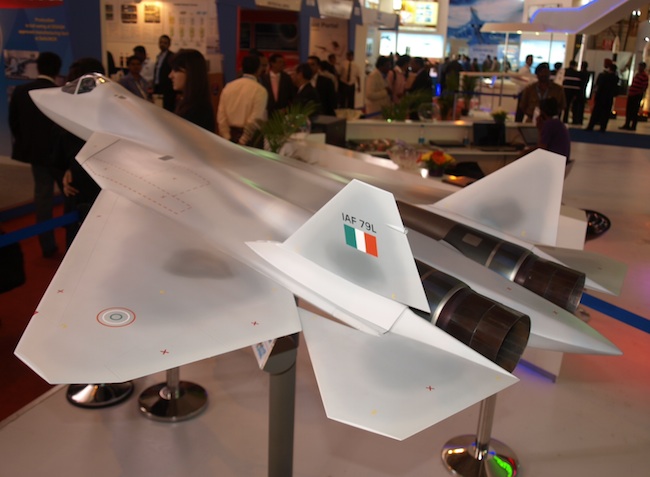
In pride of place at the entrance of HAL’s dominant presence in Hall E at Aero India is a model of the Sukhoi T-50 PKA-FA 5th generation fighter aircraft, now being referred to as the Perspective Multirole Fighter (PMF). Chairman HAL, Dr RK Tyagi, during his press conference on 7 February stated that the project definition phase (PDP) of this joint Indo-Russian program would be completed by March 2013 as HAL engineers are currently positioned with their Russian counterparts, preparing drawings and translation of documentation to Western equivalents. Vayu reports from Aero-India 2013.

The first of three PMF prototypes allocated to India will be positioned at HAL Nasik in 2015, followed by the second in 2017, and third in 2018. These test and development aircraft will be subject to flight evaluation and extensive trials by the IAF, followed by selection of systems, which also differ from the Russian variant.
Production of the PMF will be the responsibility of HAL’s Nasik Division, which will manufacture the airframe, carry out final assembly and conduct flight-testing. The definitive powerplant (as distinct from the current engines on the prototypes) will be produced at HAL Koraput. The first Indian-manufactured PMF will fly in 2022, with deliveries to the Indian Air Force to follow thereafter.

However, there is considerable debate on the practicability of near-simultaneous development of two fifth-generation fighters for the IAF, the PMF in a sense ‘competing’ with India’s Aeronautical Development Agency (ADA)’s Advanced Medium Combat Aircraft (AMCA). Concerns range from duplication of effort to whether India has the resources (both monetary and technical) to carry out both programs through to fruition.

We have added the following details from the presentation provided by HAL at the event. This extra is available as a premium content reserved for our subscribers.




















